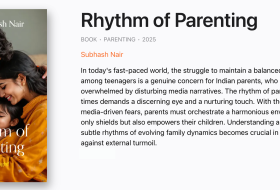The landscape of education is constantly evolving, driven by societal shifts, technological advancements, and a deeper understanding of how students learn. Recent years have seen a surge in initiatives aimed at transforming schools, moving beyond traditional models to prepare students for the complexities of the 21st century. This post explores some key areas of change, drawing on global trends and examples to illustrate the ongoing transformation of education.
Key Areas of Change:
Several interconnected areas are driving the transformation of schools:
- Curriculum Overhaul: A shift away from rote memorisation and towards competency-based education is underway. This involves focusing on the skills students need to succeed, such as critical thinking, problem-solving, creativity, and collaboration. The integration of STEAM (Science, Technology, Engineering, Arts, and Mathematics) is also gaining momentum, emphasising interdisciplinary learning and real-world applications.
- Technology Integration: Technology is no longer just a supplement to education; it’s becoming integral to the learning process. Digital learning platforms, virtual reality in classrooms, and personalised learning through AI are transforming how students access and engage with content. This also includes developing students’ digital literacy skills, essential for navigating the modern world.
- Social and Emotional Learning (SEL): Recognising that academic success is intertwined with well-being, schools are increasingly prioritising SEL. This involves fostering students’ emotional intelligence, mental health, and social skills development, creating a supportive and inclusive learning environment.
- Inclusion and Equity: Efforts to address educational disparities are crucial. This includes implementing policies that support special education, English language learners, and students from diverse socio-economic backgrounds, ensuring that all students have access to a quality education.
- Teacher Professional Development: Teachers are at the heart of educational transformation. New training models are essential to equip teachers with the skills and knowledge to adapt to modern teaching methods, effectively integrate technology, and create inclusive classrooms.
- Physical and Learning Environment: The design of schools is evolving to support modern pedagogy. Flexible learning spaces, collaborative work areas, and outdoor learning environments are becoming more common. Post-COVID, schools are also prioritising safety enhancements and creating healthy learning spaces.
Global Trends and National Policies:
Organisations like UNESCO and the OECD are playing a key role in shaping global educational strategies, promoting innovative approaches, and sharing best practices. Nationally, governments are implementing reforms to align their education systems with these global trends. For example, Finland, renowned for its progressive education system, continues to explore innovative approaches, such as increased focus on outdoor learning and personalised learning pathways. In the United States, initiatives like the Every Student Succeeds Act (ESSA) guide state-level implementation of educational reforms. Singapore’s focus on digital literacy across all levels of education serves as another example of national commitment to preparing students for the digital age.
Impact Analysis and Challenges:
While many schools and districts are seeing positive outcomes from these transformations, challenges remain. Funding constraints, the need for ongoing teacher training, and community engagement are crucial factors to consider. Measuring the impact of these changes on student outcomes, such as academic performance, engagement, and future readiness, is an ongoing process.
Public and Expert Opinions:
The transformation of education is a topic of much discussion among educators, parents, and students. Online forums, social media platforms, and educational conferences provide spaces for sharing experiences, debating the merits of different approaches, and shaping the future of education. Engaging with these conversations is essential for understanding the diverse perspectives on educational change.
The Future of School Transformation:
The journey of school transformation is ongoing. As we continue to learn more about how students learn and as society continues to evolve, education systems must adapt. By embracing innovation, prioritizing equity, and empowering teachers, we can create schools that prepare all students for success in the 21st century and beyond.
Education is transforming. Key changes include:
- Curriculum: Competency-based learning, STEAM, critical thinking.
- Tech: Digital platforms, AI, personalized learning.
- SEL: Student well-being, mental health.
- Equity: Addressing disparities for all learners.
- Teachers: New training for modern methods.
- Environments: Flexible, collaborative spaces.
Global trends and national policies drive change. Examples:
- Finland: Outdoor learning, personalized pathways.
- US: ESSA guides state reforms.
- Singapore: Digital literacy focus.
Challenges remain, but the goal is to prepare students for the 21st century.



